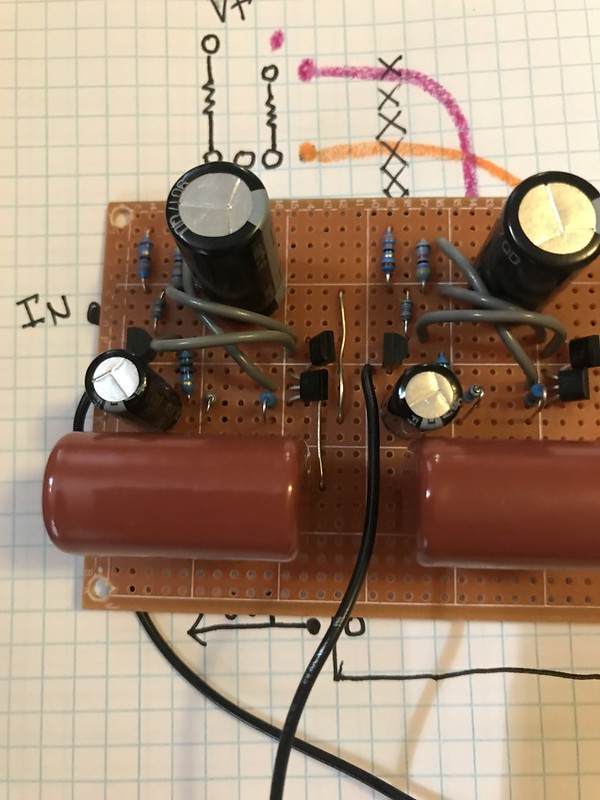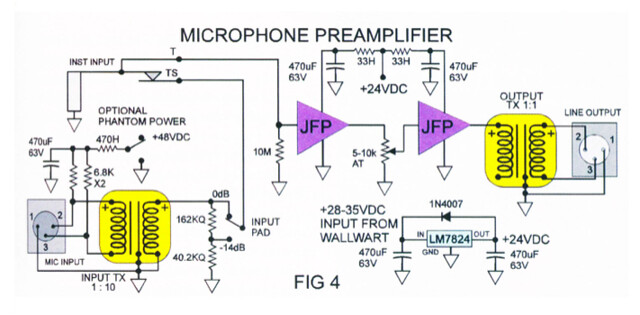substitute
Well-known member
Hey friends,
I bread boarded the tapeop hamptone jfet circuit a while back. I had it configured as two of the amp stages cascaded, everything worked great. I liked it so much I built the summing amp circuit in the article on strip board and transferred my breadboarded circuit to strip board as well. Now they're not working and all four instances of the basic amp are failing in the same way. The ZTX653 is rapidly overheating. Every fibre of my being says this has to be a layout issue, some mistake I made in transferring the schematic to strip board, but I can not find it to save my life and it's not like this is a complicated circuit.
Here's the original article...
https://tapeop.com/interviews/37/diy-jfet-mic-pre/
And here's a drawing of my layout. This is copied from the strip boards themselves after I started trouble shooting.

Here's a pic fwiw

So, maybe another set of eyes will catch what's right in front of me. Also, any general ideas as to what would cause that transistor to overheat.
Many thanks-
I bread boarded the tapeop hamptone jfet circuit a while back. I had it configured as two of the amp stages cascaded, everything worked great. I liked it so much I built the summing amp circuit in the article on strip board and transferred my breadboarded circuit to strip board as well. Now they're not working and all four instances of the basic amp are failing in the same way. The ZTX653 is rapidly overheating. Every fibre of my being says this has to be a layout issue, some mistake I made in transferring the schematic to strip board, but I can not find it to save my life and it's not like this is a complicated circuit.
Here's the original article...
https://tapeop.com/interviews/37/diy-jfet-mic-pre/
And here's a drawing of my layout. This is copied from the strip boards themselves after I started trouble shooting.

Here's a pic fwiw

So, maybe another set of eyes will catch what's right in front of me. Also, any general ideas as to what would cause that transistor to overheat.
Many thanks-
























![Electronics Soldering Iron Kit, [Upgraded] Soldering Iron 110V 90W LCD Digital Portable Soldering Kit 180-480℃(356-896℉), Welding Tool with ON/OFF Switch, Auto-sleep, Thermostatic Design](https://m.media-amazon.com/images/I/41gRDnlyfJS._SL500_.jpg)










